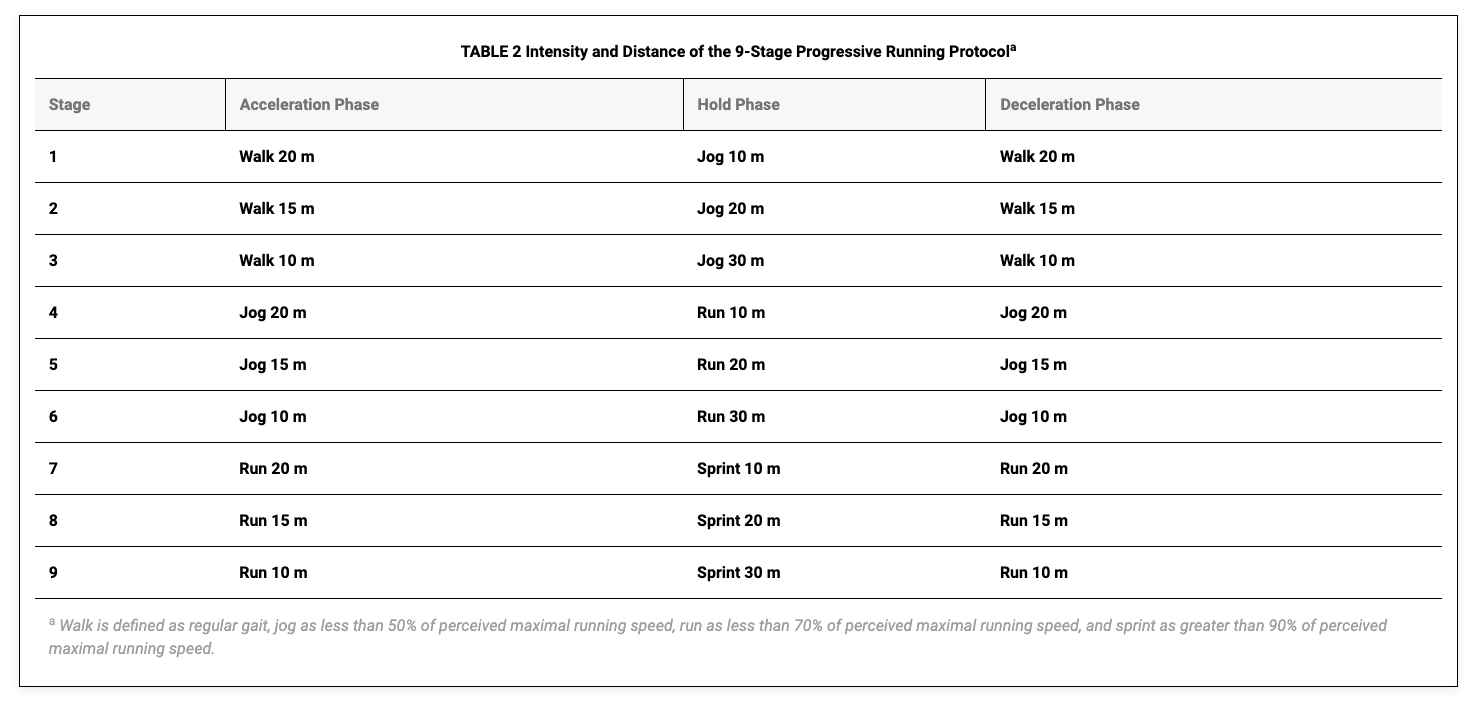Hamstring Injury Rehab
The main types of exercises recommended for rehabilitating hamstring injuries are progressive running exercises and eccentric hamstring exercises. You should not be attempting these in the first few days following an injury. If you need information about what to do in the first few days following a hamstring injury, see my blog here.
It is important to stress that every injury will be different and if you are unsure about when to start these exercises then you should seek professional guidance before attempting them.
Progressive Running
Once you can walk with minimal or no pain you can begin slowly building up your running speed again. Whilst some people may want to wait until they are totally pain free, a study in 2020 showed that it was generally safe to begin this type of activity even if you experienced a small amount of pain (4 out of 10). If you’re not sure, wait until you are walking pain free.
The progressive running protocol is done using a distance of 50 metres, which is about half the length of a football pitch. Along with walking, it uses 3 different running speeds : Jog (50% of max) run (70% of max) and sprint (100% of max). The figure below shows the 9 stages that you should progress through.
The 9 stage progressive running protocol
You shouldn’t move from one stage to the next until you can do 3 repetitions of the current stage without pain (or without minimal pain if that’s what you started with) . Two sessions should be done per week, with no more than 9 repetitions per session.
Eccentric Hamstring Exercises
Eccentric muscle exercises are those where a muscle is lengthening at the same time it is working, and have been shown to be highly beneficial for rehabilitating hamstring injuries. A 2022 paper described some of the best eccentric exercises for rehabilitating hamstring injuries. The video below covers some of the exercises from the paper, focusing on those that can be done at home without much equipment.
When should you return to sport?
The timing of your return to sport is always tricky, and some athletes are still returning to sport too quickly, risking the same muscle getting re-injured.
Studies looking at professional footballers and elite athletes have shown that following muscle injuries it takes an average of about 3 weeks before they return to full sporting activity levels.
A 2020 study looking at hamstring injuries in professional footballers showed that they didn’t return to play until they had no pain when palpating the injury area or when the muscle was used at maximum strength and a return of a full range of movement and strength in the hamstring. I would also add that you should be able to perform the most difficult running and eccentric exercises without any pain
Another study recommended that after successfully completing the progressive running and eccentric muscle exercises that athletes should also complete at least 2 full training sessions prior to returning to competitive sport. This is to subject the hamstrings to the movements/stresses of their specific sports prior to a full out competitive return.
For further information about hamstring injuries and the benefits of supplements, red light therapy and osteopathy, then see this article here.
Cliff Russell
Registered Osteopath
Forest Row and East Grinstead areas

